Harley-Davidson Servi-Car (1932-1973)
Article by Mark Trotta
Built in response to rival Indian's "Dispatch Tow" three-wheeler, the Harley-Davidson Servi-car appeared late in 1931 as a 1932 model, and stayed in production for over 40 years.
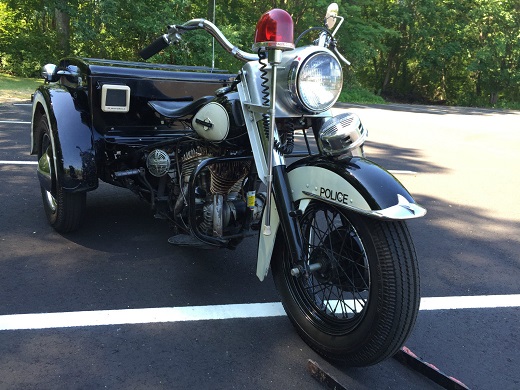
In addition to it's intended use for car delivery, the flathead-powered trike has been utilized by police departments, fire houses, postal carriers, and the military.
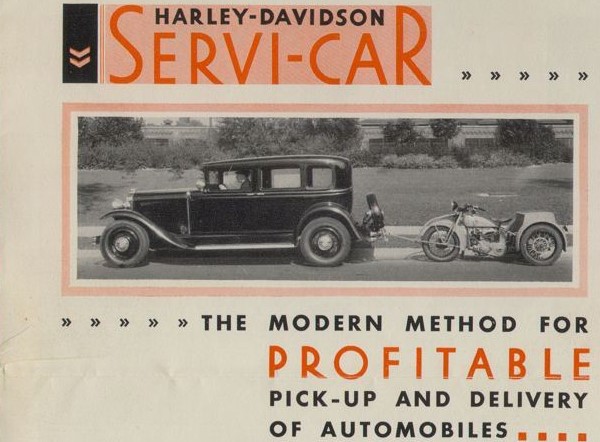
Throughout American history, Servi-cars have served in presidential parades, funeral processions and VIP motorcades.
Harley 45 Engine
The first-year Servi-car was powered by Harley-Davidson's D-Model side-valve engine. Shortly after, the 45ci R-Model (1932 to 1936) was fitted, beginning the Motor Company's long tradition in the side-valve 45ci displacement.
The R-model engines were succeeded in 1937 by the W-series, which had a recirculating oil system, replacing the constant-loss system.
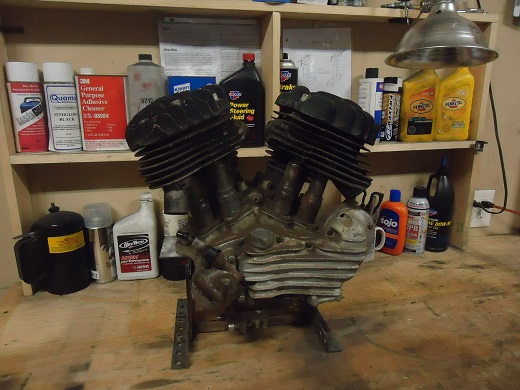
The 45 trike motor was simple and efficient, if not particularly powerful. Original compression ratio was 4.5:1, which increased to 4.75:1 in 1941. Until the Sportster surpassed it several years ago, it was Harley's longest running engine in production (41 years).
From about 1940 to 1958, Harley 45 engines were fitted with M-series (bottom float) Linkert carbs. Harley Servi-cars had DC (side float) Linkert carburetors from 1959 until 1965.
Harley 45 engines from 1937-1973 are nearly identical, save minor differences in carburetors, distributors, and generators.
Transmission
Power is transmitted through a hand shift, foot clutch, three-speed with reverse.
When introduced in 1932, the Servi-car utilized the same transmission as the R solo model. This was replaced the following year by a constant-mesh unit with three forward speeds and a reverse gear.
Although 1941 through 1973 transmission bottoms are basically the same, the tops are different to accommodate the electric starter.
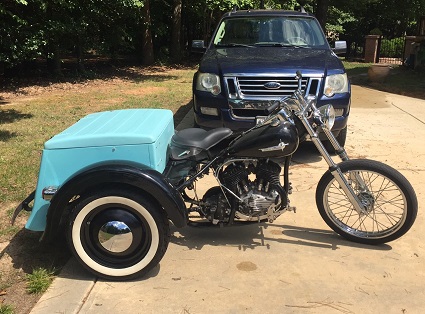
Primary drive was provided by an enclosed double-roller chain. A single chain attached the sprocket to the rear axle. Final drive was an enclosed automotive-style differential.
Right-Hand vs Left-Hand Throttle
A fair amount of police department Servi-cars came with a left-hand throttle and right-hand shifter. This was to allow patrolmen to mark the tires of parked cars with a chalk-stick, and have the left hand free to operate the throttle.
***************************
Frame and Suspension
Starting with a two-wheel motorcycle frame, the rear section was modified to accept an automotive-style rear axle.
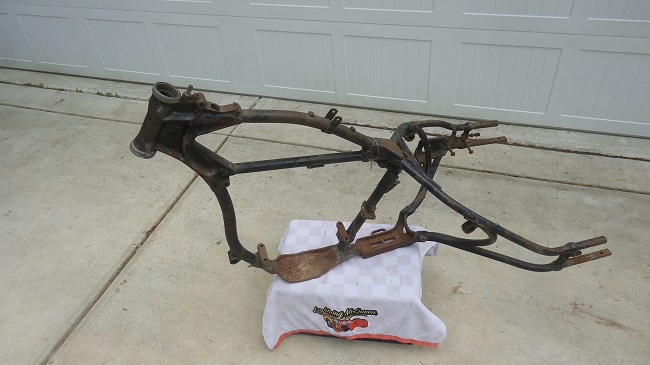
Read: Servi-Car Frame Identification and Inspection
Over the course of 41 years in production, Servi-car frames received several major and minor changes.
The rear axle had a track of 42 inches, similar to the track of most American cars at that time. This was done so that the vehicle could use the same tracks that had been made by cars.
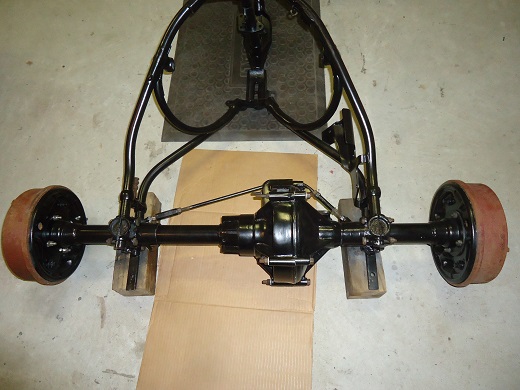
Read: Servi-car Rear Axle Overhaul
***************************
Early Servi-Car Models
- G - with small box and tow bar
- GA - with small box and no tow bar
- GD - with large box and no tow bar
- GE - with large box and air tank
- Added in 1933, the GDT - with large box and tow bar
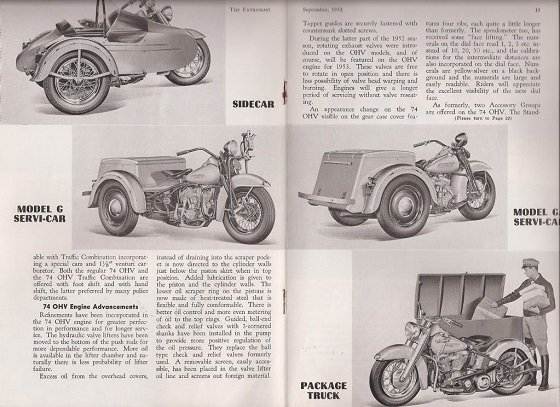
***************************
Servi-Car Front End
Up until 1957, leading-link forks (springers) like those found on Harley R- and W-series solo motorcycles were fitted to trikes.
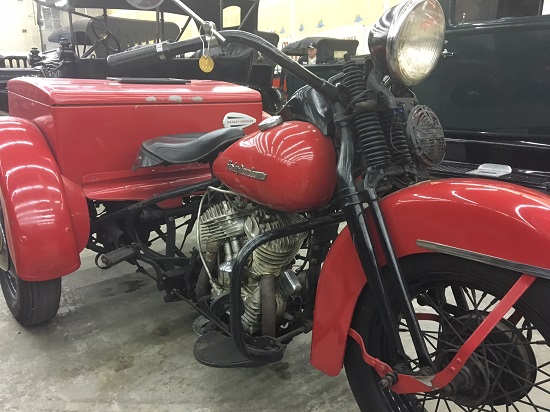
Starting in 1958, neck stem length and inner diameter changed to accommodate Hydra-Glide front forks from the Panhead.
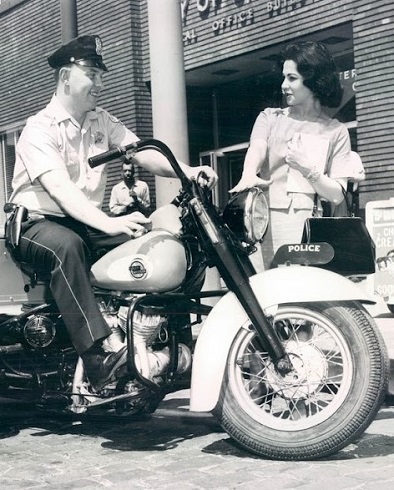
Read: Harley Forks Identification
Servi-Car Tow Bar
An optional tow bar was useful for picking up and returning cars to a repair shop. It was attached to the front of the trike, then attached to the rear bumper of a car. This allowed a single employee to ride out to the client's car, and tow the Servi-car back behind it to the shop.
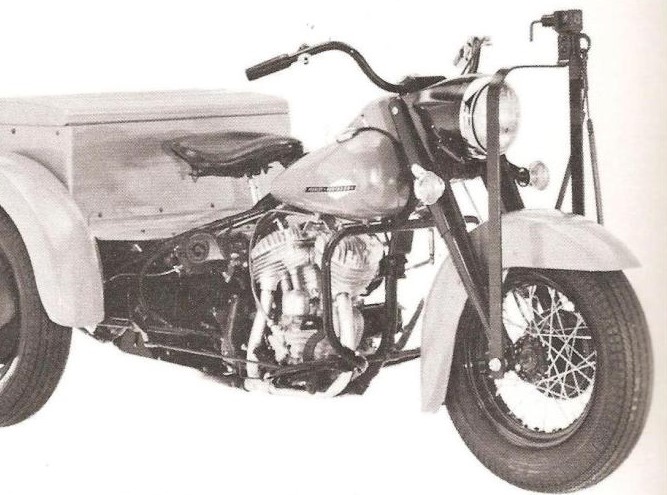
When not in use, the tow bar was either propped up on the forks or stored in the cargo box.
***************************
Cargo Box
The Servi-car cargo box was designed to hold tools and/or supplies, and had a lockable lid. Rear fenders were attached to each side of the box, and the flat rear panel was perfect for advertising.
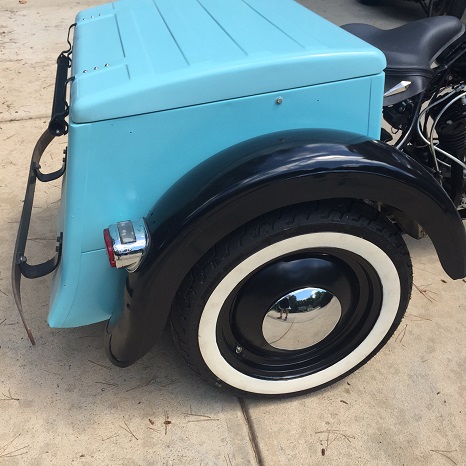
Read: Servi-car Cargo Box
Although the rear of the Servi-car is a hardtail, the cargo box is supported by leaf springs.
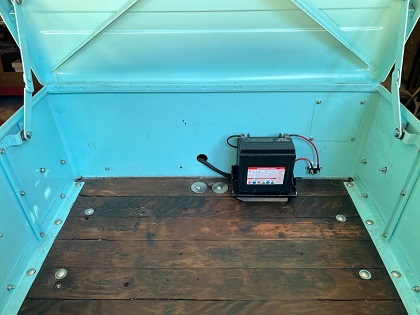
From 1932 until 1941, Harley Servi-cars had either a small or large steel cargo box. In 1942, both were replaced with an intermediate-sized box.
With the large cargo box, Servi-cars were capable of transporting all kinds of items. They were also popular as utility vehicles for small businesses, with the box doubling as a rolling billboard.
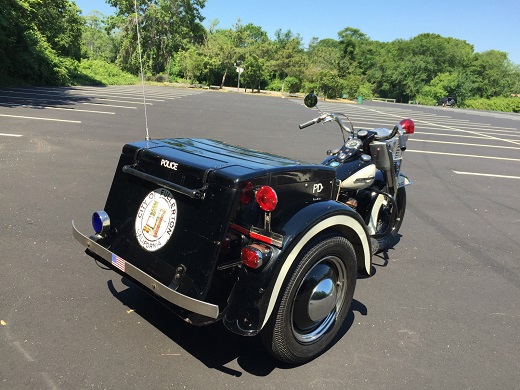
***************************
Servi-Car Brakes
From 1932 to 1936, Harley-Davidson Servi-Cars had just one rear drum brake, mounted inside the rear axle housing, operating both rear wheels. This was upgraded in 1937 to drum brakes at both rear wheels.
A drum brake was also utilized up front.
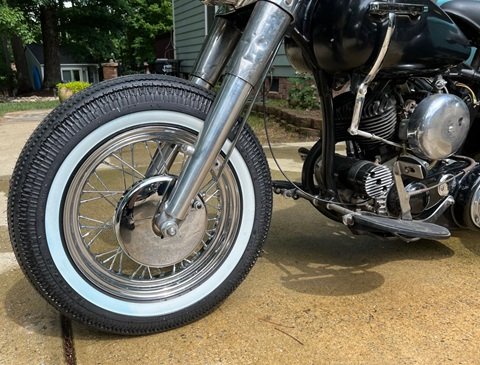
Read: Hydra Glide Brake Drum and Shoes Installation
In 1951, Servi-Cars were upgraded to hydraulic rear brakes. The same system was utilized until 1973, when disc brakes were fitted to all three wheels.
Read: Servi-Car Rear Brake Overhaul
When Harley-Davidson introduced the 61 cubic-inch Knucklehead in 1937, the Servi-car was updated, and the two bikes shared several styling cues. This included a new 100-mph speedometer.
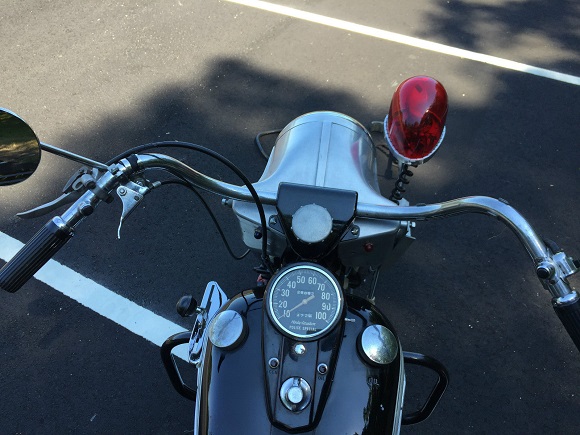
Servi-cars were upgraded continuously through the years. An enclosed chain appeared starting in 1938. A strengthened tow-bar, which was given a permanent attachment in 1939, eliminated the need to remove it and carry it separately in the cargo box. Early 1940s saw a new frame, an upgraded transmission, and rear axle halves that were previously riveted together were now welded.
_________________________________________________
_________________________________________________
In 1942, the small and large cargo boxes were replaced with one intermediate-sized box, which was manufactured for Harley-Davidson by the Chas. Abresch Company of Milwaukee, Wisconsin. This box was steel and saw production until mid-1967, when it was replaced with a fiberglass box.
***************************
First Electric-Start Harley
In 1964, Servi-car's were upgraded to electric start, the first civilian Harley-Davidson to do so. They were also the first Harley to switch from 6 volts to 12 volts (same year).
Auto-Advance Timer
In 1964, Servi-cars were upgraded with "auto advance" ignition timers. Underneath the points and condenser base plate was a pair of metal weights with springs. Auto-advance doesn't make an engine run any better, it just makes it easier to operate.
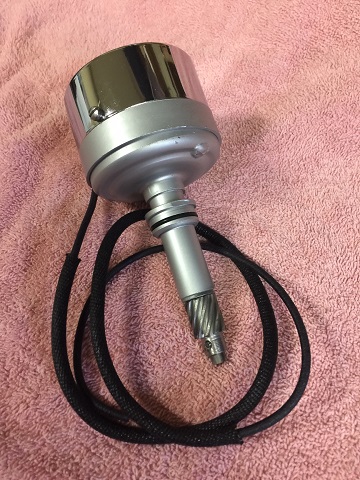
Read: Harley 45 Timer And Ignition
***************************
1966/1967 Servi-Cars
Mid-sixties updates included a change of carburetor, from Linkert side-float to bottom-float. An alternator drive gear ran a car-style Delco alternator, replacing the generator.
In mid-1967, fiberglass boxes replaced the steel cargo boxes. The fiberglass boxes were obviously lighter, and some might say more stylish, but steel-box Servi-car's are more sought-after and exchange hands for more money.
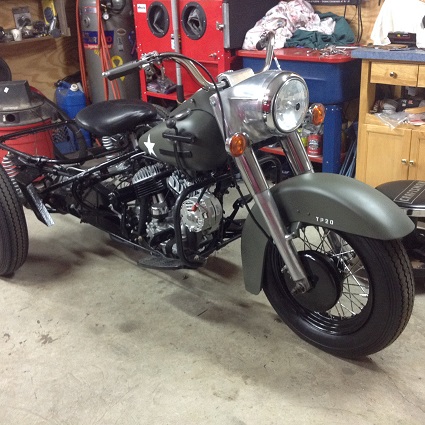
1972 Servi-Car, Owner/Restorer Mike Boyd
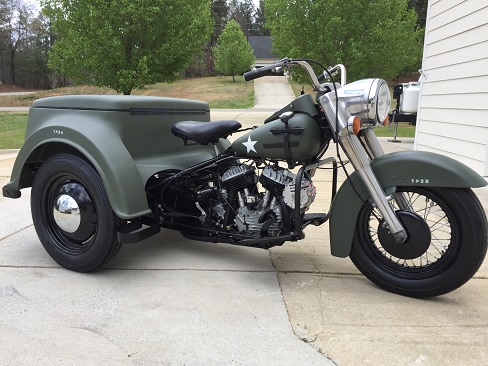
Last-Year Servi-Car
The original Harley trike was last produced in 1973, with several reportedly sold in 1974. Late-year production had six-lug rear wheels replacing the five-lug style. These models were equipped with rear disc brakes.
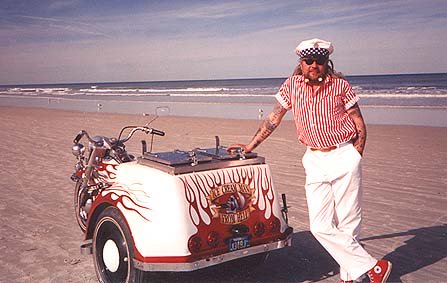
1971 Servi-Car, Owner/Restorer Jim Trotta
***************************
Servi-Car Value
During the 1960's and 1970's, after their service was no longer needed, many old police trikes were sold cheaply at auctions. Many more were ignored and forgotten.
A common practice back in the sixties and seventies was to rake out the front end of an old trike and put a set of fat car tires and rims on the back. This makes unmolested frames and original rear wheels hard to find and expensive.
In today's market, Harley-Davidson Servi-Cars in good running condition are exchanging hands for $14,000-$16,000. Exceptionally clean, original examples with documented history have sold for upwards of $20,000.
***************************
Finding Servi-Car Parts
Original Harley trike parts are getting harder to find, and pricey when you find them. Bare frames are currently exchanging hands in the $900-$1,200 range.
Complete 45 flathead motors sell for $1,500 and up, and 3-speed (with reverse) transmissions sell for $1,000 and up. The last Servi-car rear axle I saw on ebay sold for $950, with no rims and tires.
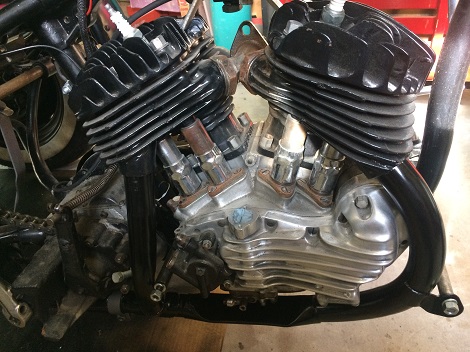
Read: Servi-Car Exhaust And Why Getting Parts Is So Frustrating
***************************
Related Articles: